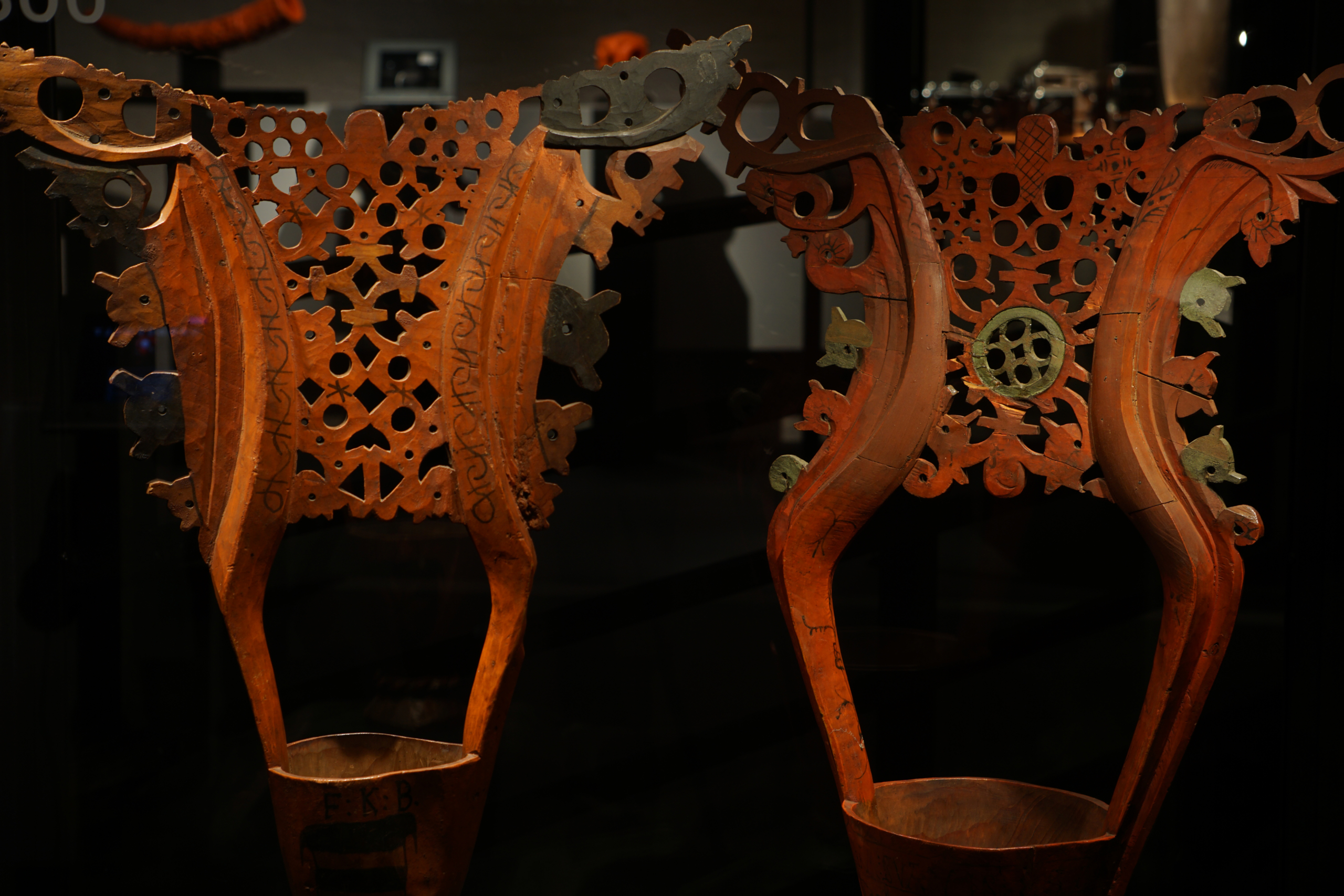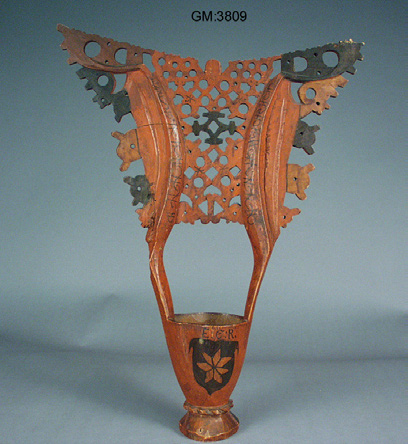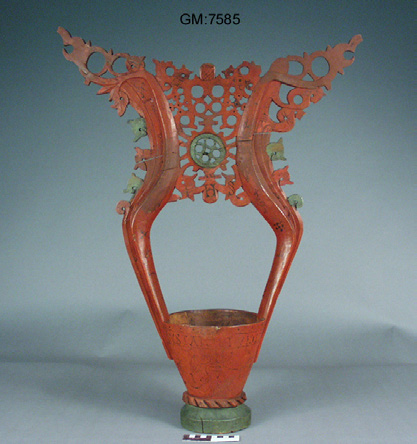Cultural

Noble families used a ceremonial drinking cup at festivities such as weddings and name day celebrations.One of the cups dates from 1526 and is one of the oldest such cups known in Sweden. The Latin inscription “Gustate et videte quoniam suavis est” means “Taste and see, for it is sweet”.
The quotation comes from the Book of Psalms in the Bible and originally said: “Taste and see that the Lord is sweet” but the word Lord is missing here. The sayings on the early drinking cups were often about drinking; in the late Middle Ages they were instead about God or the Virgin Mary.
The outside of the second cup is decorated with the owner’s coats of arms and initials: E:G:R. (Erik Gyllenstierna Knight) and F:K:B. (Mrs Karin Bielke). The cup was made in 1561 at the earliest, which is the year when Erik Gyllenstierna became a knight.
Through his marriage to Karin Bielke in 1557 he had married into a family in which many people displayed their high status by means of ceremonial drinking cups.The cups are carved from spruce root. Both were made in Finland, which at that time was part of Sweden. Unlike the Swedish cups, Finnish ceremonial drinking cups were designed so that the drinker could insert his or her head between the tall side pieces that resemble twigs.Cultural historical value is often connected to the fact that the object is old and to some extent unique. Historical narratives can also be linked to these objects.
Through the ceremonial drinking cups we can talk about families that were very important in the past, the positions of power at that time, and how people celebrated their festivities and forged ties with each other through marriage. If nothing else, we can be fascinated by the fact that the ceremonial cups have been preserved through almost 500 years of history.

6501
Ceremonial drinking cup with coats of arms
This type of carved wooden ceremonial drinking cup has two tall vertical side pieces. The side pieces touch about 20 cm above this cup, creating an ornament in the form of branches or a crown.
The entire cup has a triangular shape and is painted in a reddish-orange colour with some black detailing. It weighs 730 grams and is 62.5 cm tall and 47 cm wide. This cup is from the 1560s.
GM:3809

6502
Ceremonial drinking cup with an eagle and a horse
This type of carved wooden ceremonial drinking cup has two tall vertical side pieces. The side pieces touch about 25 cm above this cup, creating an ornament in the form of branches or a crown.
The entire cup is painted in a reddish-orange colour with some green detailing. It weighs 1.2 kg and is 75 cm tall and 56 cm wide. This cup is from 1526.
GM:7585